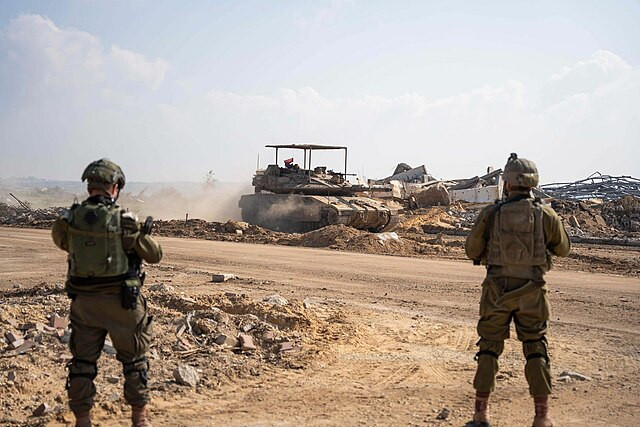Israeli forces have withdrawn from the Netzarim corridor in Gaza as part of a ceasefire agreement with Hamas, officials from both sides confirmed Sunday. The move marks a key step in the fragile truce that has paused the 15-month war but faces significant hurdles in negotiations for an extension.
The corridor, a four-mile stretch of land that bisects Gaza from north to south, had been occupied by Israeli forces early in the conflict as a military zone. Under the ceasefire terms, Israel began allowing displaced Palestinians to cross the corridor last month, with thousands streaming northward to return to homes damaged or destroyed in the fighting. The complete withdrawal of Israeli forces fulfills another condition of the deal.
Hamas spokesperson Abdel Latif Al-Qanoua described the withdrawal as a victory for the group, stating, Hamas had "forced the enemy to submit to our demands". Israeli officials, speaking anonymously due to restrictions on discussing troop movements, did not confirm how many soldiers were involved in the withdrawal or their new positions. However, Israeli forces remain stationed along Gaza's borders with Egypt and Israel, and future troop movements will be part of further negotiations.
The first phase of the ceasefire, which began on January 19, has involved a staggered exchange: Hamas is gradually releasing 33 Israeli hostages taken during the October 7, 2023, attack, in exchange for a temporary halt to fighting, the release of hundreds of Palestinian prisoners, and the delivery of humanitarian aid into Gaza. On Saturday, three additional hostages-Ohad Ben Ami, Eli Sharabi, and Or Levy-were freed, bringing the total to 16. Their frail conditions upon release sparked outcry in Israel.
The second phase of the agreement is expected to be more complex, involving the release of all remaining hostages in exchange for a full Israeli withdrawal and the establishment of a "sustainable calm." However, negotiations remain uncertain, with deep mistrust between both sides and pressure on Israeli Prime Minister Benjamin Netanyahu from his far-right allies, who have pushed for a resumption of the war. Finance Minister Bezalel Smotrich has vowed to leave the government if Israeli forces fully withdraw from Gaza.
Netanyahu is sending a delegation to Qatar, a key mediator in the talks, to discuss the terms of the next phase. However, Israeli officials characterized the delegation as mid-level and focused on "technical details," raising doubts about a breakthrough in negotiations.
Meanwhile, tensions have escalated in the occupied West Bank, where Israeli forces expanded military operations. On Sunday, Palestinian health officials reported that two women, including an eight-months-pregnant woman, were shot and killed by Israeli troops in the Nur Shams refugee camp. The Israeli military has not commented on the incident, though Defense Minister Yoav Gallant said Israel's military operations in the West Bank were aimed at preventing Iranian influence in the region.
Adding further uncertainty to the ceasefire's future, former U.S. President Donald Trump has floated a controversial proposal to relocate Gaza's population. While Israeli officials have shown some openness to the idea, Hamas and Palestinian leaders have rejected it outright. Saudi Arabia also condemned Israeli comments suggesting Palestinians could establish a state outside Gaza, calling it an attempt to deflect from what it described as "ethnic cleansing."
Despite these challenges, the ceasefire has held longer than many expected, providing a temporary pause to a war that has killed more than 47,000 Palestinians, according to Gaza's health ministry. However, with both sides standing firm on core issues-Israel's refusal to withdraw completely and Hamas' insistence on a total military pullout-the coming weeks will test whether the fragile truce can transition into a lasting peace agreement.






